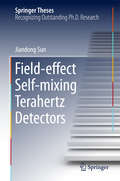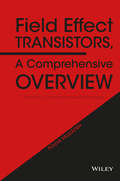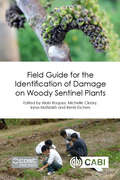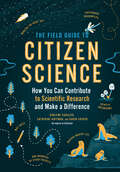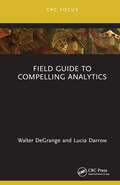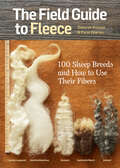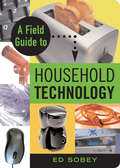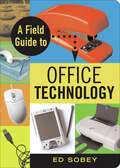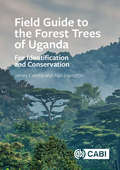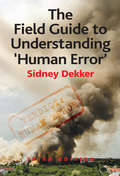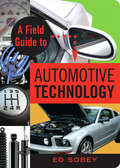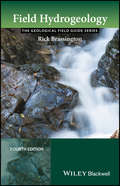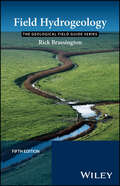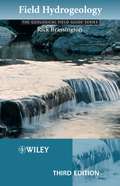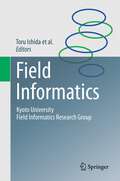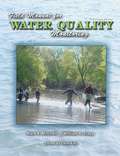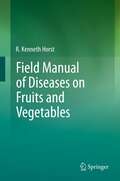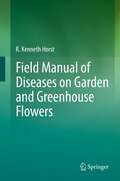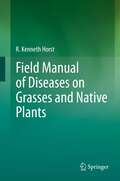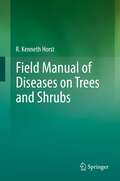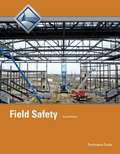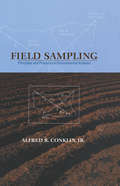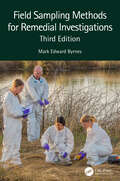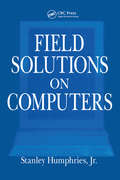- Table View
- List View
Field-effect Self-mixing Terahertz Detectors
by Jiandong SunA comprehensive device model considering both spatialdistributions of the terahertz field and the field-effect self-mixing factorhas been constructed for the first time in the thesis. The author has foundthat it is the strongly localized terahertz field induced in a small fractionof the gated electron channel that plays an important role in the highresponsivity. An AlGaN/GaN-based high-electron-mobility transistor with a2-micron-sized gate and integrated dipole antennas has been developed and canoffer a noise-equivalent power as low as 40 pW/Hz1/2 at 900 GHz. By furtherreducing the gate length down to 0. 2 micron, a noise-equivalent power of 6pW/Hz1/2 has been achieved. This thesis provides detailed experimentaltechniques and device simulation for revealing the self-mixing mechanismincluding a scanning probe technique for evaluating the effectiveness ofterahertz antennas. As such, the thesis could be served as a valuableintroduction towards further development of high-sensitivity field-effect terahertzdetectors for practical applications.
Field Effect Transistors, A Comprehensive Overview
by Pouya ValizadehThis book discusses modern-day Metal Oxide Semiconductor Field Effect Transistors (MOSFETs) and future trends of transistor devices. This book provides an overview of Field Effect Transistors (FETs) by discussing the basic principles of FETs and exploring the latest technological developments in the field. It covers and connects a wide spectrum of topics related to semiconductor device physics, physics of transistors, and advanced transistor concepts. This book contains six chapters. Chapter 1 discusses electronic materials and charge. Chapter 2 examines junctions, discusses contacts under thermal-equilibrium, metal-semiconductor contacts, and metal-insulator-semiconductor systems. Chapter 3 covers traditional planar Metal Oxide Semiconductor Field Effect Transistors (MOSFETs). Chapter 4 describes scaling-driving technological variations and novel dimensions of MOSFETs. Chapter 5 analyzes Heterojunction Field Effect Transistors (FETs) and also discusses the challenges and rewards of heteroepitaxy. Finally, Chapter 6 examines FETs at molecular scales. Links the discussion of contemporary transistor devices to physical processes Material has been class-tested in undergraduate and graduate courses on the design of integrated circuit components taught by the author Contains examples and end-of-chapter problems Field Effect Transistors, A Comprehensive Overview: From Basic Concepts to Novel Technologies is a reference for senior undergraduate / graduate students and professional engineers needing insight into physics of operation of modern FETs.Pouya Valizadeh is Associate Professor in the Department of Electrical and Computer Engineering at Concordia University in Quebec, Canada. He received B.S. and M.S. degrees with honors from the University of Tehran and Ph.D. degree from The University of Michigan (Ann Arbor) all in Electrical Engineering in 1997, 1999, and 2005, respectively. Over the past decade, Dr. Valizadeh has taught numerous sections of five different courses covering topics such as semiconductor process technology, semiconductor materials and their properties, advanced solid state devices, transistor design for modern CMOS technology, and high speed transistors.
Field Guide for the Identification of Damage on Woody Sentinel Plants
by Kalev Adamson Ayse Gülden Aday Kaya Marie-Anne Auger-Rozenberg Sylvie Augustin Dimitrios N Avtzis Yuri N Baranchikov Ellie Barham Marek Barta Refika Ceyda Beram Conceição Boavida Helena Bragança Daiva Burokiene Thomas Cech György Csóka H. Tugba Dogmus Lehtijärvi Rein Drenkhan Jian-Ting Fan Milka Glavendekic Irinia Ionescu-Malancus Magdalena Kacprzyk Marc Kenis Natalia Kirichenko Ferenc Lakatos Asko Lehtijärvi Giorgio Maresi Carmen Morales-Rodríguez Ana Cristina Moreira Dmitry L Musolin Richard O'Hanlon Irena Papazova-Anakieva Leopold Poljakovic-Pajnik Simone Prospero Hans Ravn Andrey V Selikhovkin Venche Talgø Manole Traian Andrea Vannini Anna Maria Vettraino Johanna WitzellThis book is a heavily-illustrated, internationally applicable, practical guide for the identification of likely causal agents of damage to trees and woody shrubs. It is intended for use in sentinel plantings - a new tool to identify pests in the country of origin, used to inform pest risk analysis and risk mitigation measures - where agents often may not be known and only damage visible. Field Guide for the Identification of Damage on Woody Sentinel Plants: - Aids the identification of the type of agent that may have caused observed damage, including pathogens, invertebrates and abiotic factors. - Explains how to take and preserve samples and how to proceed to obtain a more definitive identification of pests. - Includes a general damage chapter in addition to specific chapters on damage to leaves, buds and shoots, roots, trunk, and flowers, fruits and seeds. - Contains 800 full colour, high quality photographs to aid analysis. This is an essential guide for plant health professionals, including inspectors for plant protection organizations, foresters and nursery managers, in addition to students of forest entomology and pathology.
A Field Guide to Buying Organic
by Luddene Perry Dan SchultzThe definitive guide to healthful, affordable food shopping in the Organic Age--from a pioneer in the organic movement. What does it really mean when a food is labeled organic? While many of us believe there are good reasons to buy organic, what exactly are they? The authors of this indispensable handbook sift fact from fiction to help you make informed decisions that are right for you. Here is everything you need to know, including when paying more for organic is worth it--and when it's not. A Field Guide to Buying Organic provides you with: ·Self-tests to determine your current organic-shopping habits--and the type of organic shopper you want to become ·A primer on organic food standards, labels, and seals ·Health and quality comparisons of organically grown versus conventionally grown produce ·An aisle-by-aisle supermarket guide to information about the most popular organic produce, dairy, meat and poultry, baked goods, nuts, seeds, grains, convenience foods, and drinks ·The truth about pesticides, hormones, genetically modified foods (GMOs), toxins, and bacteria ...Plus illustrations featuring product logos and contact information, and a fascinating overview of the evolution of organics From the Trade Paperback edition.
The Field Guide to Citizen Science: How You Can Contribute to Scientific Research and Make a Difference
by Caren Cooper Darlene Cavalier Catherine HoffmanLearn how monitoring the night sky, mapping trees, photographing dragonflies, and identifying mushrooms can help save the world! Citizen science is the public involvement in the discovery of new scientific knowledge. A citizen science project can involve one person or millions of people collaborating towards a common goal. It is an excellent option for anyone looking for ways to get involved and make a difference. The Field Guide to Citizen Science, from the expert team at SciStarter, provides everything you need to get started. You&’ll learn what citizen science is, how to succeed and stay motivated when you&’re participating in a project, and how the data is used. The fifty included projects, ranging from climate change to Alzheimer&’s disease, endangered species to space exploration, mean sure-fire matches for your interests and time. Join the citizen science brigade now, and start making a real difference!
Field Guide to Compelling Analytics (Chapman and Hall/CRC Focus Case Studies in Analytics and OR)
by Walter DeGrange Lucia DarrowField Guide to Compelling Analytics is written for Analytics Professionals (APs) who want to increase their probability of success in implementing analytical solutions. In the past, soft skills such as presentation and persuasive writing techniques have been the extent of teaching junior APs how to effectively communicate the value of analytical products. However, there are other aspects to success such as trust and experience that may play a more important role in convincing fellow APs, clients, advisors, and leadership groups that their analytic solutions will work. This book introduces the formula ‘Analytics + Trust + Communication + Experience > Convince Them’ to illustrate an AP’s ability to convince a stakeholder. The ‘Convince Me’ stakeholders might be an analytics team member, team lead, decision-maker, or senior leader that are either internal or external to the AP’s organization. Whoever they are, this formula represents a concise, digestible, and above all practical means to increase the likelihood that you will be able to persuade them of the value of your analytical product. Features Includes insight questions to support class discussion. Written in broadly non-mathematical terms, designed to be accessible to any level of student or practicing AP to read, understand, and implement the concepts. Each section introduces the ideas through real-life case studies.
The Field Guide to Fleece: 100 Sheep Breeds & How to Use Their Fibers
by Carol Ekarius Deborah RobsonWith this compact portable reference in hand, crafters can quickly and easily look up any of 100 different sheep breeds, the characteristics of their fleece, and the kinds of projects for which their fleece is best suited. Each breed profile includes a photograph of the animal and information about its origin and conservation status, as well as the weight, staple length, fiber diameter, and natural colors of its fleece. This is a great primer for beginners, and a handy guide for anyone who loves working with fleece.
A Field Guide to Household Technology
by Ed SobeyIllustrating how a fire alarm detects smoke and what the "plasma" is in a plasma screen television, this fascinating handbook explains how everyday household devices function and operate. More than 180 different household technologies are covered, including gadgets unique to apartment buildings and houseboats. Devices are grouped according to their "habitats"--the living room, family room, den, bedroom, kitchen, bathroom, and basement--and feature a detailed description of what the device does and how it works, as well as a photograph for easy identification. With helpful sidebars describing related technical issues, such as why a cheap dimmer switch can interfere with radio reception, this handbook for curious readers provides carefully detailed descriptions and the history behind many of the older household technologies like toasters and faucets to newer technologies like motion detectors, TiVo, and satellite radio.
A Field Guide to Office Technology
by Ed SobeyWith more than 160 entries detailing everything from the junk buried in desk drawers to that mysterious box blinking away in the coat closet, this practical guide navigates through modern office technology. Each entry includes a functional description of a device (what it is and how it works) as well as particulars on who invented it and how its design has evolved over the years. Devices are grouped according to their habitats--in the conference room, hanging from the ceiling, or connected to a computer--to assist in quick and easy identification. Solving office mysteries, such as why telephone keypads have their ones in the upper left corner while calculator keypads place the ones in the lower left corner, this fascinating resource decodes the often confusing technological landscapes of everyday offices.
Field Guide to the Forest Trees of Uganda: For Identification and Conservation
by James Kalema Alan HamiltonThis book is a guide for the identification of the indigenous forest trees of Uganda. It will be useful for those who wish to contribute towards the conservation of the forests or to plant indigenous trees. Information is provided on how to propagate and cultivate about 80 of the most valuable species. Indigenous trees provide numerous resources useful for welfare and development. They include many types of timber and non-timber forest products, such as craft materials, foods and medicines. The proximity of indigenous forest helps to moderate the local climate, making it more suitable for agriculture. Indigenous forests protect springs, therefore safeguarding water supplies more effectively than exotic trees such as pines and eucalyptus. All 450 known indigenous tree species from the forests are included. Both scientific and local names are provided, the latter in 21 languages. Local names facilitate access to knowledge and values traditionally attached to the species, useful when planning pathways of development firmly rooted in local culture. The book will be invaluable for botanists, foresters, rural development workers and members of the general public concerned about contributing to conservation and sustainable development in Uganda. Many of the species grow in neighbouring countries, so the book has relevance there too.
The Field Guide to Understanding 'Human Error': Second Edtion
by Sidney DekkerWhen faced with a ’human error’ problem, you may be tempted to ask 'Why didn’t these people watch out better?' Or, 'How can I get my people more engaged in safety?' You might think you can solve your safety problems by telling your people to be more careful, by reprimanding the miscreants, by issuing a new rule or procedure and demanding compliance. These are all expressions of 'The Bad Apple Theory' where you believe your system is basically safe if it were not for those few unreliable people in it. Building on its successful predecessors, the third edition of The Field Guide to Understanding ’Human Error’ will help you understand a new way of dealing with a perceived 'human error' problem in your organization. It will help you trace how your organization juggles inherent trade-offs between safety and other pressures and expectations, suggesting that you are not the custodian of an already safe system. It will encourage you to start looking more closely at the performance that others may still call 'human error', allowing you to discover how your people create safety through practice, at all levels of your organization, mostly successfully, under the pressure of resource constraints and multiple conflicting goals. The Field Guide to Understanding 'Human Error' will help you understand how to move beyond 'human error'; how to understand accidents; how to do better investigations; how to understand and improve your safety work. You will be invited to think creatively and differently about the safety issues you and your organization face. In each, you will find possibilities for a new language, for different concepts, and for new leverage points to influence your own thinking and practice, as well as that of your colleagues and organization. If you are faced with a ’human error’ problem, abandon the fallacy of a quick fix. Read this book.
A Field Guide to utomotive Technology
by Ed SobeyWritten for mechanical novices who may not know their catalytic converters from their universal joints, this practical guide helps teach a basic understanding of how automobiles function. Devices are grouped according to their habitats--under the hood, inside the car, and more--to help identify the technology in question. Solving automotive puzzles such as where exactly does a dipstick dip and what is rack and pinion steering, this handy reference illuminates what's going on under the hood without all that grime and grease.
Field Hydrogeology (Geological Field Guide)
by Rick BrassingtonThe fourth edition of this bestselling textbook has been fully revised in order to present the most up-to-date and comprehensive guide to completing a hydrogeological study. Beautifully presented with full colour photos and diagrams throughout, Field Hydrogeology retains its practical pocket size for easy use in the field. This new edition includes all the recent developments in the environmental regulations, with particular focus on the use of innovative technology. New topics include geothermal energy, soakaways, marrying manual water level readings with logger records, prediction of long-term drawdown and lateral extent of impacts, and flow measurement in locations with small head gradients. With case studies and text boxes to aid comprehension, and a particular emphasis on practical application, this is an essential tool for students taking Hydrogeology and/or field course modules in Geology, Earth Sciences, Hydrogeology and Engineering courses.
Field Hydrogeology (Geological Field Guide)
by Rick BrassingtonField Hydrogeology Pocket-sized field workbook for students studying hydrogeology at undergraduate and postgraduate levels The fully revised Fifth Edition of Field Hydrogeology serves as a comprehensive guide to conducting a hydrogeological study, beautifully presented with full colour photos and diagrams throughout, in a practical pocket size for easy use in the field. This new edition includes recent developments in the environmental regulations, with particular focus on the use of innovative technology. New topics in the Fifth Edition include the monitoring of boreholes using piezometers, how to identify the origin of water in the basement of a building, and an expanded section on geothermal energy. The text also includes case studies and text boxes to aid in reader comprehension, with a particular emphasis on practical application throughout. The Fifth Edition of Field Hydrogeology addresses key topics such as: Horizontal wells and shallow aquifers Complicated flow rates through the unsaturated zone The use of tritium, chlorofluorocarbons and sulphur hexafluoride in recharge studies Cleaning of boreholes using hydrogen peroxide and oxalic acid Field Hydrogeology is an essential tool for undergraduate and postgraduate students in Geology, Earth Sciences, Hydrogeology and Engineering courses who are learning to conduct fieldwork and need a handy pocket-sized guide to accompany them into the field.
Field Hydrogeology
by Rick BrassingtonThe successful investigation of the hydrogeology of an area depends on the collection of reliable field data. Field Hydrogeology, Third Edition follows a systematic approach to completing a hydrogeological study and explains how to decide on the measurements that are needed and on the instruments and techniques required. Measurements that are needed and on the instruments and techniques required. Measurements of groundwater levels, rainfall and evaporation spring and stream flows and the use of ground water tracer techniques are covered. There is a great deal of practical information on all aspects of planning and completion of field investigation and on the interpretation of field investigation and on the interpretation of field evidence. Advice on safety is also included.This third edition has been fully revised and updated to bring the book into line with developments in environmental regulations. The order of the chapters reflects the structure of a hydrogeological project and the development of a conceptual model up to completion of a report. The focus is on current practical applications of hydrogeological investigations using new case histories and a new chapter on specialist techniques has been included.Handy pocket-size for field researchFeatures case historiesFocuses on practical applicationsContains a new chapter on groundwater investigationsField Hydrogeology, Third Edition is an invaluable resource for undergraduate and postgraduate students of geology, hydrogeology, environmental sciences and engineering, as well as a wide range of professionals working in the water resources and environmental protection fields.
Field Informatics
by Toru IshidaHere we use the term "field" to refer to a sphere of practical operation, and correspondingly the term "field informatics" describes informatics tools and methodologies that arise in the field. The components of field informatics are description, prediction, design and transfer, and the methods for those components vary widely. For example, we consider the social goal of revitalizing a mountainous area experiencing depopulation and we show how the tools and methodologies of field informatics may be used to describe such situations using remote sensing, biologging, human sensing and ethnography; the effects of various solutions can be predicted using system dynamics and multiagent simulations; the solutions can be designed using inclusive design or participatory design methods; and finally the experience gained can be transferred using case writing and outreach communication. The authors are specialists in diverse areas such as informatics, engineering, agriculture, sociology and pedagogy, and their areas of interest range from environment conservation to social education for international cooperation. They have a particular focus on the environment in southeast Asia and related topics such as large-scale traffic simulations, participatory workshops, inclusive design workshops, distance learning, and intercultural collaboration. This book targets graduate students seeking tools and methodologies for natural observation, field workers engaged in social participation, and researchers and engineers pursuing innovation. The techniques described in the book could also be exploited by government officials to form consensus and develop activities or by non-profit organizations to undertake more effective social programs.
Field Manual For Water Quality Monitoring: An Environmental Education Program For Schools
by Mark K. Mitchell William B. Stapp Earth Force Inc. StaffField Manual for Water Quality Monitoring: An Environmental Education Program for Schools
Field Manual of Diseases on Fruits and Vegetables
by R. Kenneth HorstThe Fruits and Vegetables manual is a reference manual on diseases which attack fruits (including berries), vegetables, and nuts. The manual identifies various types of diseases which are known to invade these plants located throughout North, Central, and South America. The recordings include diseases caused by fungi, bacteria, viruses, viroids, phytoplasmas, and nematodes. Causal disease agents are described and illustrated in some cases and diseases and disease control measures are also discussed. A manual such as this is never finished since new reports of diseases are continuously reported.
Field Manual of Diseases on Garden and Greenhouse Flowers
by R. Kenneth HorstThe Garden and Greenhouse Flowers manual is a reference manual on diseases which attack garden and greenhouse flowers. The manual identifies various types of diseases which are known to invade these plants located throughout North, Central, and South America.The recordings include diseases caused by fungi, bacteria, viruses, viroids, phytoplasmas, and nematodes. Causal disease agents are described and illustrated in some cases and diseases and disease control measures are also discussed. A manual such as this is never finished since new reports of diseases are continuously reported.
Field Manual of Diseases on Grasses and Native Plants
by R. Kenneth HorstThe Grasses and Native Plants manual is a reference manual on diseases which attack grasses, forage, native flowers, and weeds. The manual identifies various types of diseases which are known to invade these plants located throughout North, Central, and South America. The recordings include diseases caused by fungi, bacteria, viruses, viroids, phytoplasmas, and nematodes. Causal disease agents are described and illustrated in some cases and diseases and disease control measures are also discussed. A manual such as this is never finished since new reports of diseases are continuously reported.
Field Manual of Diseases on Trees and Shrubs
by R. Kenneth HorstThe Trees and Shrubs manual is a reference manual on diseases which attack trees, shrubs, and vines. The manual identifies various types of diseases which are known to invade these plants located throughout North, Central, and South America. The recordings include diseases caused by fungi, bacteria, viruses, viroids, phytoplasmas, and nematodes. Causal disease agents are described and illustrated in some cases and diseases and disease control measures are also discussed. A manual such as this is never finished since new reports of diseases are continuously reported.
Field Safety
by National Center for Construction Education Research StaffThis exceptionally produced trainee guide features a highly illustrated design, technical hints and tips from industry experts, review questions and a whole lot more! Key content includes: Introduction to Safety, Introdcution to Materials Handling, Confined Spaces, Work-Zone Safety, Electrical Safety, Working from Elevations, Welding Safety, Steel Erection, Motorized Equipment Safety, Crane Safety, Rigging Practices, and Concrete and Masonry. Instructor Supplements
Field Sampling: Principles and Practices in Environmental Analysis (Books in Soils, Plants, and the Environment)
by Alfred R. Conklin Jr.Written by a renowned professional with more than 30 years of experience in environmental sampling and analysis, this reference describes in unparalleled detail all the essential elements for the development and execution of a successful sampling plan at both contaminated and uncontaminated sites. The book covers presampling planning and decision-making, specific sampling situations, and correct sample labeling, and presents the framework and background for the sampling of any contaminated site. Presenting a wide variety of models, quality control procedures, and valuable troubleshooting methods, Field Sampling contains an abundance of topics never before covered in any other source.
Field Sampling Methods for Remedial Investigations
by Mark Edward ByrnesOriginally published in 1994, the first edition of Field Sampling Methods for Remedial Investigations soon became a premier resource in this field. The "Princeton Groundwater" course designated it as one of the top books on the market that addresses strategies for groundwater characterization, groundwater well installation, well completion, and groundwater sampling. This long awaited third edition provides most current and most cost-effective environmental media characterization methods and approaches supporting all aspects of remediation activities. This book integrates recommendations from over one hundred of the most current US EPA, State EPA, US Geological Survey, US Army Corps of Engineers, and National Laboratory environmental guidance and/or technical documents. This book provides guidance, examples, and/or case studies for the following subjects: Implementing the EPA’s latest Data Quality Objectives process Developing cost effective statistical & non-statistical sampling designs supporting all aspects of environmental remediation activities, and available statistical sample design software Aerial photography, surface geophysics, airborne/surface/downhole/building radiological surveys, soil gas surveying, environmental media sampling, DNAPL screening, portable X-ray fluorescence measurements Direct push groundwater sampling, well installation, well development, well purging, no-purge/low-flow/standard groundwater sampling, depth-discrete ground sampling, groundwater modeling Tracer testing, slug testing, waste container and building material sampling, pipe surveying, defining background conditions Documentation, quality control sampling, data verification/validation, data quality assessment, decontamination, health & safety, management of investigation waste A recognized expert on this subject, author Mark Byrnes provides standard operating procedures and guidance on the proper implementation of these methods, focusing on proven technologies that are acknowledged by EPA and State regulatory agencies as reputable techniques.
Field Solutions on Computers
by Stanley Humphries Jr.Field Solutions on Computers covers a broad range of practical applications involving electric and magnetic fields. The text emphasizes finite-element techniques to solve real-world problems in research and industry. After introducing numerical methods with a thorough treatment of electrostatics, the book moves in a structured sequence to advanced topics. These include magnetostatics with non-linear materials, permanent magnet devices, RF heating, eddy current analysis, electromagnetic pulses, microwave structures, and wave scattering. The mathematical derivations are supplemented with chapter exercises and comprehensive reviews of the underlying physics. The book also covers essential supporting techniques such as mesh generation, interpolation, sparse matrix inversions, and advanced plotting routines.
